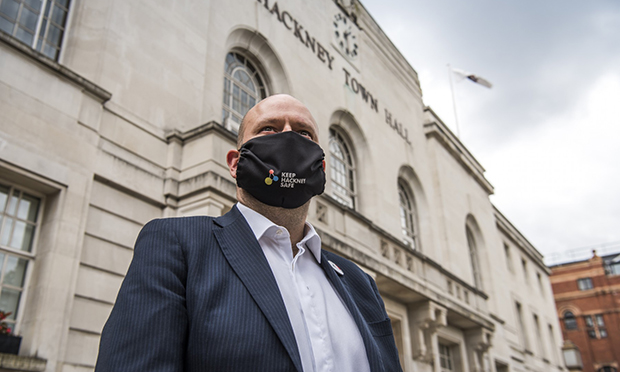‘London should move together’: Mayor Glanville says Hackney-wide lockdown remains ‘unlikely’

Hackney Mayor Philip Glanville has poured cold water on the idea of a borough-wide lockdown due to the “porous” nature of London’s communities.
The borough leader was speaking at a Mayor’s Question Time event, at which he confirmed that Hackney’s incidence rate for the virus has increased to 65 cases per 100,000 people.
The threshold at which London’s Covid-19 containment and escalation framework states local lockdowns should be considered is 50 cases per 100,000 people.
Quizzed by leading councillors on the borough’s scrutiny panel on whether lockdowns could come into force in Hackney, Glanville pointed to the “strong belief” among local and regional government that any escalation in measures would be London-wide.
Tower Hamlets Mayor John Biggs sent an open letter to residents in recent days urging people not to mix with other households – the first borough to do so – with London Mayor Sadiq Khan saying on 25 September that the situation in the capital had reached a “worrying tipping point” as hospital admissions increased and London was added to the government’s Covid-19 watch-list.
Glanville said: “I wouldn’t second guess in any way what another borough leader has said. I know from personal experience that we were close to that situation before, talking about household mixing, and indeed in Stamford Hill we issued a leaflet a couple of months ago that effectively said to a part of the borough, ‘Don’t mix households or have guests in your home’.
“The challenge there is that it is not backed up by national messaging because it is not part of an escalation sequence, and you’re effectively asking people to do something that you have no powers to back up.
“To be frank, I don’t think it worked. I think it caused confusion, because ultimately you have to give that message to groups way beyond who the message is intended for.
“We’re at 65 per 100,000. We’ve gone through the 50. Several other London boroughs have too. There are now 10 to 13 boroughs hovering around or above that 50. In terms of the tools we might use, the most critical message is that core public health message.”
Responding to concerns from health scrutiny chair Cllr Ben Hayhurst that testing in care homes will not be “adequate” during any second wave of Covid, with structural issues such as high use of agency staff, low pay and lack of sick pay still remaining, the Mayor said that the Town Hall is continuing to push for more frequent testing than the monthly system in place in such settings, which he described as “not good enough”.
The council is also doing further work to support people with protected characteristics, especially around race and ethnicity, with Glanville saying that some on the original list of those who should shield were “at lower risk than some who weren’t [shielding]”, and that bespoke advice is being developed for those who may want to take greater precautions.
The Town Hall’s public health team is also exploring why hospital admissions in the borough remain “substantially lower” than those seen in neighbouring communities with comparable prevalence rates, according to Glanville.
Challenged by Dalston councillor Peter Snell on what more could be done to understand local vectors of transmission, Glanville said that apart from the household clusters seen in Stamford Hill, the council was unable to establish a pattern to prevalence in specific parts of the borough, with incidence rates in wards moving up and down.
According to the borough leader, the priority of the Town Hall administration is still the core messaging of wearing a mask in public, washing hands, and keeping a distance of two metres, while accepting that it remains a “big leap” for a resident to take the same precautions in a cafe – putting on a mask when getting up to go to the toilet, for example – as they would during a visit from a relative.
Glanville added: “When you have visitors to your home, treat it like you’re meeting someone you don’t know on the bus. Ultimately that is the risk factor in the home. It’s not that home is a more dangerous environemnt, it’s that people let their guard down because they know the people involved.
“My biggest fear is that the government is an unreliable partner when it asks residents, businesses and local government. Good relationships have been built up, especially through our public health team, Public Health England, and the Department of Health and Social Care, but when we saw that testing capacity leave London, we didn’t have any more purchase on that than many of the other places that did not have that relationship.
“It is a real challenge working when you don’t know what is going to happen next. My understanding of what is going to happen around escalations is that there is a strong belief that London should move together. That comes from a recognition that our wards, communities and boroughs are very porous.
“People don’t just live in Hackney, or north-east London. The London media market and communications system relies on a strong message going out on what Londoners need to do if we were going to move up on that escalation procedure.
“North-east and north-west London are seeing greater rates of coronavirus than, say, south-west London. That brings with it a challenge of holding that system together and moving together as one. It is likely to be a London-wide escalation.”
